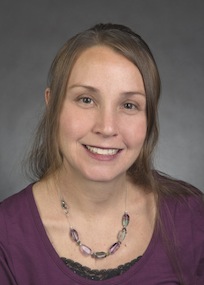Idaho State University educational foundations Professor Green explores children’s special places
August 10, 2012
Children's "special places" are under the bed, in a cupboard, behind a chair or out in a hidden nook of the backyard. We can remember our own and can often identify some of the special places of our children.
Idaho State University education Assistant Professor Carie Green is analyzing the significant of these children's special places and the effect they have.
 "These special places are important in children's development and developing a sense of autonomy," Green said. "They allow them to create their own world within yet separate from the adult world."
"These special places are important in children's development and developing a sense of autonomy," Green said. "They allow them to create their own world within yet separate from the adult world."
Green said this was the first study to identify the special places of pre-school aged children within the home environment from the perspective of children. In her published study "Exploring Young Children's Special Places" she identified four different types of special places: indoor, outdoor, other places and imaginary.
"The important part is that these are their places, free from adults," Green said. "They are hiding places, places to play and places to go to retreat. Adults need to respect them and some parents did foster a place for children to go."
She said understanding the significance of children’s own places builds upon the importance of honoring children's sense of agency, as they develop their own identity. Parents reported children use their special places to have privacy, retreating to them to process emotions and emerging feeling better. The implications of the study are relevant to practitioners who work with children in a variety of fields including education, psychology, sociology and the health sciences.
For example, teachers can use their knowledge of special places to provide activities for children to execute in their own special places to help them develop different skills.
Green's study analyzed the special places of 31 3- to 5-year-olds who participated in the study’s phase one at school. Eight children’s homes, three boys and five girls, were visited during the second phase of the study.
"Kids didn't have just one special place, they have all kinds of special places that suited different needs," Green said.
Green identified 246 special places for the 31 study subjects, 158 indoor, 46 outdoor, 16 “other” and six imaginary. She recorded one "no special place."
"Most places were small in size and I was never invited in," Green said. "And the size of the space prevented my access. Some kids did not want to show their places. They shouldn’t be forced to share about that space."
The most commonly mentioned indoor spots were in the closet, in the bedroom, under the bed, behind the couch and under the table. The most common outdoor spots were in the sandbox, the swings, under the tree and mountains/rocks.
"It is important to understand that kids need to separate themselves and be off in their own space and respect this," Green said.
Results of her study have been published in Children, Youth and Environment and International Journal of Early Childhood.
###
Categories:
